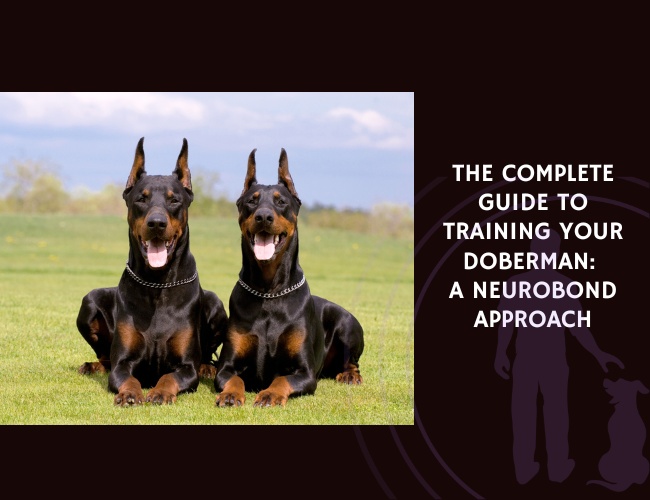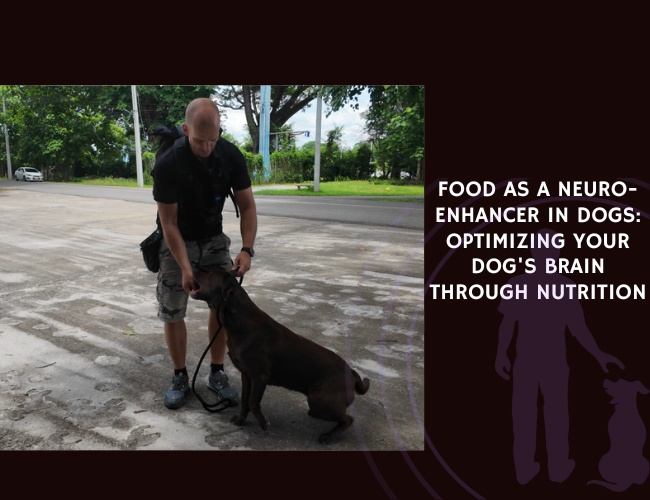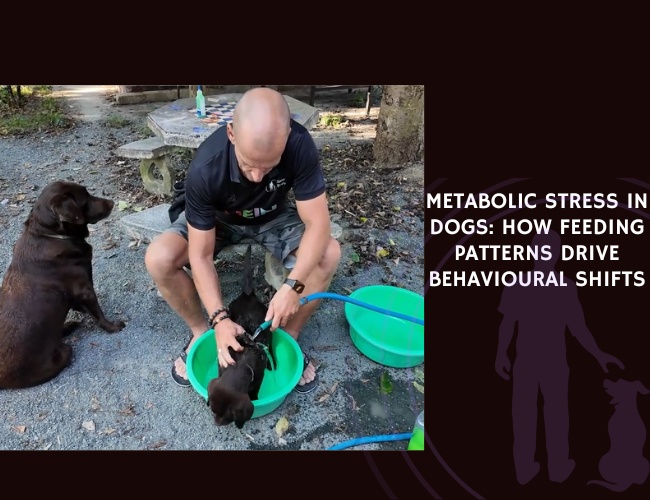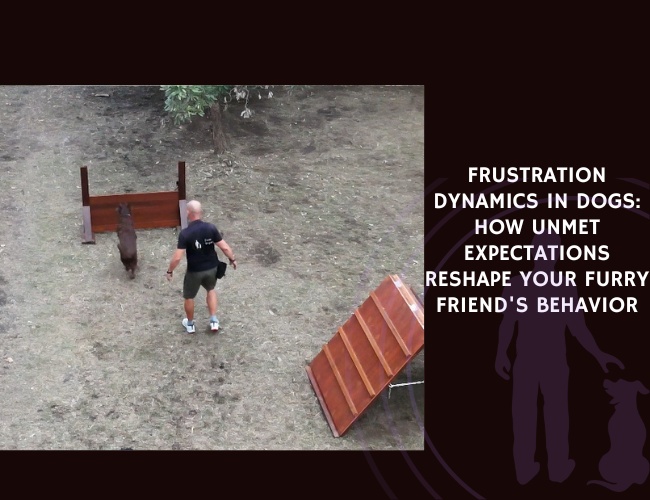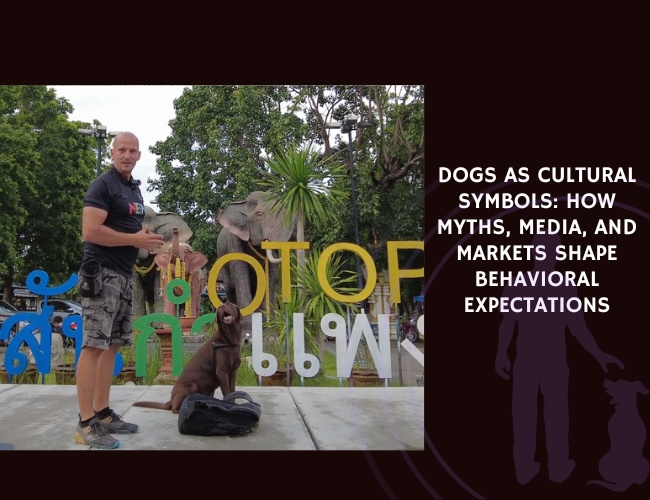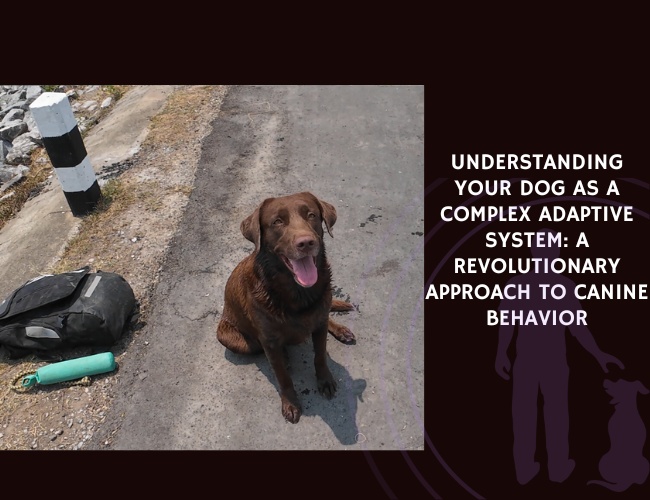Introduction
The Doberman Pinscher stands as one of history’s most remarkable canine achievements — a breed sculpted with precision by Friedrich Louis Dobermann in 19th century Germany. Originally bred as a protector and companion, today’s Doberman carries within their DNA a fascinating paradox: the fierce guardian and the sensitive soul, the independent thinker and the devoted partner. Understanding how to train your Doberman means understanding this duality, and more importantly, working with their nature rather than against it.
When we speak of training a Doberman through the NeuroBond approach, we’re not talking about creating an obedient robot. Instead, we’re building a partnership based on mutual trust, clear communication, and respect for the dog’s inherent intelligence. Your Doberman isn’t just learning commands — they’re learning to navigate the world alongside you as a trusted companion. This journey requires patience, consistency, and above all, a willingness to see training not as a task to complete, but as an ongoing conversation between two intelligent beings.
Let us guide you through a training philosophy that honors your Doberman’s natural instincts while building the deep, neurological bond that transforms a powerful working dog into a devoted family member. 🧡
Character & Behavior
Understanding Your Doberman’s Core Nature
Your Doberman’s character is built on layers of complexity that make them both challenging and deeply rewarding companions. At their core, Dobermans possess what we might call “selective intelligence” — they’re not just smart, they’re strategically smart. This means your furry friend is constantly evaluating situations, making decisions, and yes, sometimes choosing when to comply with your requests based on their own internal logic.
The Intelligence Factor Dobermans rank among the top five most intelligent dog breeds, but their intelligence manifests differently than, say, a Border Collie’s eager-to-please mentality. Your Doberman’s mind works more like a chess player’s — always thinking several moves ahead. This cognitive strength means they’ll quickly learn both the behaviors you want and the ones you don’t. They’ll test boundaries not out of defiance, but because their analytical minds need to understand the full picture of your relationship dynamics.
Emotional Depth and Sensitivity Beneath that sleek, powerful exterior beats the heart of a surprisingly sensitive soul. Dobermans form intense emotional bonds with their families, often described as “velcro dogs” for their desire to stay close. This emotional intensity means they’re acutely aware of your moods, tensions in the household, and changes in routine. When training, this sensitivity becomes your greatest asset — or your biggest challenge if mishandled.
The Guardian Instinct Your Doberman’s protective nature isn’t learned; it’s hardwired into their neural pathways through generations of selective breeding. This instinct manifests as:
- Heightened alertness to environmental changes
- Natural wariness of strangers (requiring careful socialization)
- Strong territorial awareness
- Protective positioning between family members and perceived threats
Understanding these breed-specific traits through the NeuroBond lens means recognizing that every behavior serves a purpose in your dog’s world. Next, we’ll explore how these characteristics translate into their unique communication style.
Vocalization & Communication
Decoding Your Doberman’s Language
Dobermans are surprisingly nuanced communicators, using a combination of vocalizations, body language, and what we call “energy projection” to convey their thoughts and feelings. Unlike some breeds that bark first and think later, your Doberman’s vocalizations are typically purposeful and context-specific.
The Vocal Repertoire Your Doberman’s communication toolkit includes:
- Alert barking: Sharp, focused barks indicating something requires your attention
- Whining or soft vocalizations: Often expressing emotional needs or anticipation
- The “Doberman grumble”: A unique, low rumbling sound expressing contentment (not to be confused with growling)
- Silence: Perhaps most importantly, Dobermans often communicate through strategic silence, watching and waiting
Body Language Speaks Volumes A Doberman’s body is an open book if you know how to read it:
- Ear positioning: Forward indicates alertness; back suggests uncertainty or submission
- The “Doberman lean”: When they press their body against you, they’re seeking reassurance and offering protection simultaneously
- Tail communication: A relaxed, low wag shows contentment; high and stiff indicates alertness or potential aggression
- Eye contact: Dobermans maintain intense eye contact when bonded, using it as a primary communication channel
Energy and Presence Perhaps unique among breeds, Dobermans project what handlers often describe as “presence” or “energy.” This isn’t mystical — it’s a combination of micro-expressions, posture, and behavioral patterns that communicate their emotional state. Learning to read this energy becomes crucial in the NeuroBond approach, as it allows you to respond to your dog’s needs before they escalate into problematic behaviors.
In the NeuroBond framework, we don’t suppress these communications. Instead, we acknowledge them, understand their source, and guide them toward constructive expression. Your Doberman is always telling you something — the question is whether you’re fluent enough in their language to understand. 🐾
Training & Education
The NeuroBond Approach to Doberman Training
Training a Doberman through the NeuroBond philosophy means abandoning traditional dominance-based methods in favor of building genuine partnership. Remember: your Doberman’s operating system runs on connection, not control. Their high intelligence combined with emotional sensitivity creates a unique training landscape where force fails but understanding succeeds.
First Step: Establishing the Neural Connection Before any formal training begins, we must establish what we call the “invisible leash” — that neurological bond that makes your Doberman choose to work with you rather than being forced to comply. This process involves:
- Eye Contact Exercises: Start by rewarding voluntary eye contact. Your Doberman’s intense gaze isn’t just looking at you; they’re reading your emotional state, intentions, and reliability as a leader.
- Proximity Rewards: Celebrate every moment your Doberman chooses to be near you without being called. This builds the foundation for recall and attention work.
- Emotional Attunement: Spend quiet time together without commands or expectations. Let your Doberman learn your rhythms, breathing patterns, and energy states.
From Bond to Behavior Once the neural connection is established (typically 2-3 weeks of consistent work), we begin shaping specific behaviors through what we call “guided discovery”:
Leash Walking – The Doberman Way Traditional heel training often fails with Dobermans because it suppresses their natural vigilance. Instead:
- Stand still when they pull, allowing them to discover that forward movement only happens with a loose leash
- Reward check-ins with forward progress
- Allow controlled exploration within boundaries
- Use their protective instincts by positioning yourself as the one needing guidance, not control
Recall Through Relationship Your Doberman’s recall shouldn’t depend on treats or toys but on their desire to maintain connection:
- Start recalls during moments of natural attention
- Use a specific tone that communicates joy, not demand
- Practice in increasingly distracting environments
- Never recall for negative experiences (nail trimming, bath time)
Managing the Guardian Instinct Rather than suppressing protective behaviors, we redirect them:
- Teach “watch” command to acknowledge their concerns
- Follow with “all clear” to release vigilance
- Create specific protocols for doorway greetings
- Use their intelligence to differentiate between real threats and normal situations
Word Associations vs. Commands In NeuroBond training, we create word associations rather than commands:
- “Sit” becomes a suggestion that sitting brings pleasant outcomes
- “Stay” transforms into “wait with me” — a cooperative pause
- “Down” means “let’s relax together”
This semantic shift matters because Dobermans respond to partnership, not servitude. They’ll work tirelessly for someone they respect but shut down under harsh correction or mindless repetition.
Addressing Training Challenges Common Doberman training challenges through the NeuroBond lens:
- Selective Hearing: Often indicates the bond needs strengthening, not that commands need to be louder
- Leash Reactivity: Usually stems from frustrated protection instincts — redirect through “watch and dismiss” protocols
- Resource Guarding: Address through abundance training, showing resources are infinite when shared
- Separation Anxiety: Build confidence through graduated departures, always returning before anxiety peaks
Remember: every training session either builds or erodes your bond. Choose connection over correction, understanding over dominance, and patience over pressure. 🧡
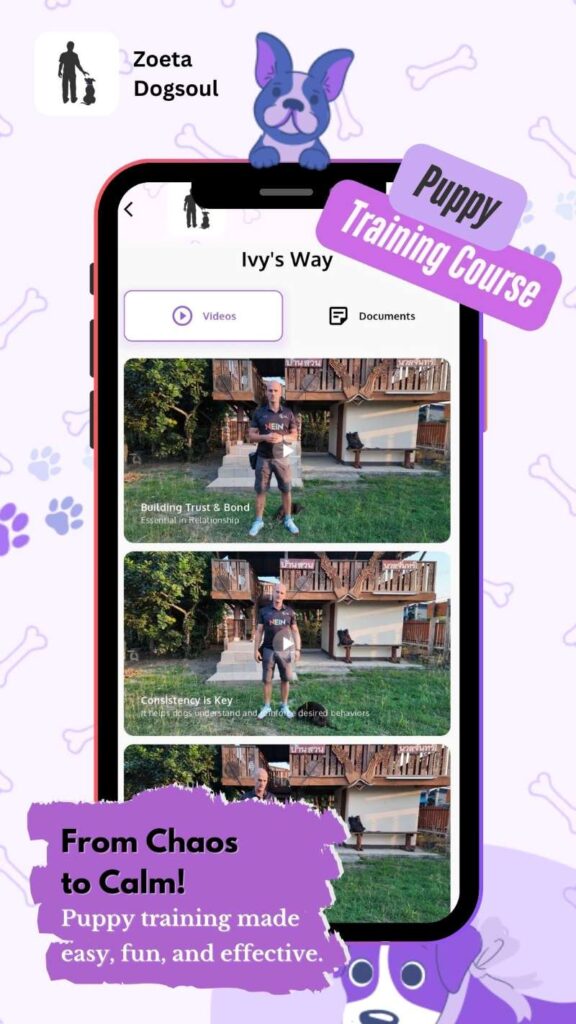
Performance & Activities
Channeling Your Doberman’s Drive
Dobermans are working dogs at heart, bred for performance and purpose. Without appropriate outlets for their physical and mental energy, that sophisticated operating system we discussed earlier can redirect itself into destructive or obsessive behaviors. The key is finding activities that honor their breeding while strengthening your NeuroBond connection.
Mental Stimulation: The Cognitive Athlete Your Doberman’s brain craves challenges like their body craves exercise. Mental fatigue often trumps physical exhaustion in creating a balanced dog:
- Scent Work: Taps into their investigative heritage while building confidence
- Puzzle Solving: Progressive difficulty puzzles satisfy their need to problem-solve
- Training Games: “Find it” games, hidden treats, and naming toys build cognitive flexibility
- Novel Experiences: New routes, environments, and controlled challenges prevent mental stagnation
Physical Excellence Through Purpose Rather than mindless fetch or running, Dobermans thrive with purposeful physical activities:
- Protection Sports (Schutzhund/IGP): Channels guardian instincts constructively
- Agility: Combines physical prowess with mental processing
- Dock Diving: Many Dobermans love water work despite stereotypes
- Bikejoring/Canicross: Satisfies their need for cardiovascular intensity
- Structured Play: Tug games with rules, fetch with obedience breaks
The Working Partnership In the NeuroBond framework, activities aren’t just exercise — they’re opportunities to deepen your connection:
- Choose activities that require teamwork, not just individual performance
- Celebrate effort over outcome
- Use activities to build trust in challenging situations
- Allow your Doberman to excel and sometimes lead
Daily Enrichment Protocols A fulfilled Doberman needs:
- 60-90 minutes of varied physical activity
- 30-45 minutes of mental challenges
- Social interaction with trusted humans/dogs
- Quiet bonding time without performance pressure
- Novel experiences weekly
Remember: a tired Doberman isn’t necessarily a good Doberman — a fulfilled Doberman is. The difference lies in meeting their needs holistically rather than simply exhausting them.
Nutritional Recommendations
Fueling Your Doberman’s Body and Mind
Nutrition directly impacts your Doberman’s ability to learn, bond, and behave appropriately. Their lean, athletic build and active metabolism require precise nutritional support to maintain both physical health and cognitive function — essential elements in the NeuroBond training approach.
The Doberman Metabolism Your Doberman’s nutritional needs reflect their working heritage:
- High protein requirements (25-30% dry matter basis)
- Moderate fat needs (15-18% for adults)
- Complex carbohydrates for sustained energy
- Careful calorie management to prevent bloat risk
Brain Food for Training Success Optimal cognitive function requires specific nutrients:
- Omega-3 fatty acids: Support neural pathways and learning capacity
- Antioxidants: Protect against cognitive decline
- B-vitamins: Essential for neurotransmitter production
- Quality proteins: Provide amino acids for dopamine and serotonin synthesis
Feeding Schedules and Training Align feeding with training for maximum effectiveness:
- Morning feeding 30 minutes after wake-up rituals
- Training sessions 2-3 hours post-meal (reduced bloat risk)
- Small, high-value training treats comprising <10% daily calories
- Evening meal as bonding opportunity, not just nutrition
Special Considerations
- Bloat Prevention: Multiple small meals, slow feeders, no exercise immediately after eating
- Food Sensitivity: Many Dobermans have sensitive digestion — monitor for allergies
- Hydration: Especially critical for this active breed
- Senior Adjustments: Reduced calories, increased joint support after age 7
The Food-Bond Connection In NeuroBond philosophy, feeding isn’t just nutrition — it’s communication:
- Hand-feeding portions builds trust
- Making dogs “work” for meals through puzzles increases satisfaction
- Consistent feeding rituals create security
- Sharing appropriate human foods in moderation deepens social bonds
Your Doberman’s diet directly impacts their ability to form and maintain the neural connections essential to NeuroBond training. Feed for performance, health, and connection. 🐾
Driven. Bonded. Brilliant.
Dobermans don’t just learn—they evaluate.
Each command is a negotiation, not a demand. Their sharp minds thrive when trusted to think, not simply obey. Training success lies in mutual strategy, not blind repetition.
Connection precedes compliance.
Without trust, there is no traction. The invisible leash forms before the physical one ever matters. Your presence, tone, and timing define whether they follow out of fear—or out of faith.
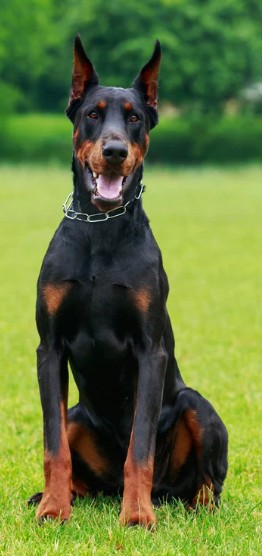
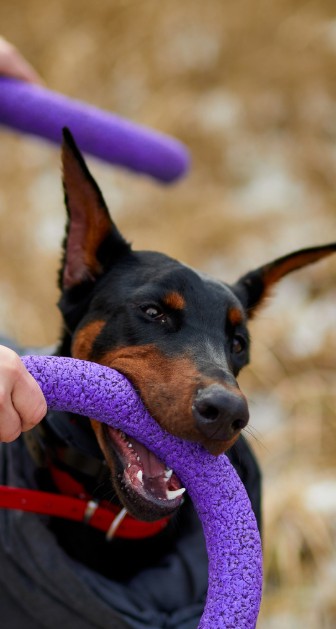
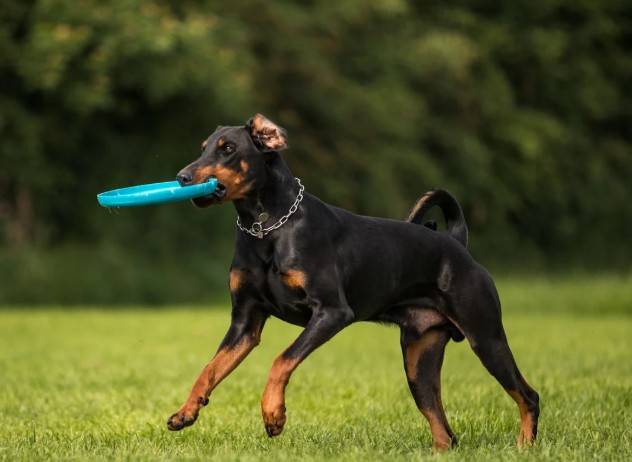
Purpose gives power direction.
Their drive is a gift—if guided. Channel their energy into challenge, their vigilance into teamwork, and their instincts into intelligence. That’s when the Doberman becomes more than capable—they become connected.
Health Concerns
Understanding Your Doberman’s Vulnerabilities
A healthy Doberman is a trainable Doberman. Understanding breed-specific health concerns isn’t just about medical management — it’s about recognizing how physical discomfort or genetic predispositions can manifest as behavioral challenges. In the NeuroBond approach, we view health holistically, understanding that physical wellbeing directly impacts emotional stability and learning capacity.
Genetic Health Considerations Dobermans face several breed-specific health challenges that can impact training and behavior:
Dilated Cardiomyopathy (DCM)
- Affects up to 60% of Dobermans
- Early signs: exercise intolerance, lethargy during training
- Behavioral impact: reduced enthusiasm, apparent “stubbornness”
- Management: annual cardiac screening, appropriate exercise modification
Wobbler Syndrome (Cervical Spondylomyelopathy)
- Compression of spinal cord in neck region
- Signs: unsteady gait, reluctance to lower head
- Training impact: difficulty with positions requiring neck flexion
- Adaptation: modified training positions, elevated food bowls
Von Willebrand’s Disease
- Blood clotting disorder
- Training consideration: careful during physical activities
- Behavioral impact: may cause hesitancy in rough play
Hip Dysplasia
- Less common than in other large breeds but still significant
- Early signs: bunny hopping, reluctance to jump
- Training modifications: low-impact activities, avoid repetitive jumping
Behavioral Health and Anxiety Dobermans’ emotional sensitivity can manifest as:
Separation Anxiety
- Neurological hypersensitivity to isolation
- Prevention through graduated alone-time training
- Never use punishment for anxiety-driven behaviors
Compulsive Behaviors
- Flank sucking, excessive licking, shadow chasing
- Often stress or boredom-induced
- Address through enrichment and anxiety reduction
Fear Periods and Trauma Response
- Dobermans may experience intense fear periods
- Single negative experience can create lasting impact
- Recovery requires patient, systematic desensitization
The Pain-Behavior Connection Unrecognized pain often manifests as:
- Sudden aggression or reactivity
- Training regression
- Reluctance to perform known behaviors
- Changes in social dynamics
In the NeuroBond framework, we always rule out physical causes before addressing behavioral concerns. A dog in pain cannot form positive neural connections, making health monitoring essential to training success.
Preventive Wellness Protocol
- Bi-annual veterinary examinations
- Annual cardiac screening after age 2
- Regular body condition scoring
- Attention to subtle behavior changes
- Pain assessment before training intensification
Remember: your Doberman’s stoic nature means they often hide discomfort until it’s severe. Stay attuned to subtle changes in enthusiasm, movement, or engagement — these may be your first indicators that health is impacting behavior.
Lifestyle & Environment
Creating the Ideal Doberman Habitat
Your Doberman’s environment shapes their behavior as much as any training protocol. These sophisticated dogs require more than just physical space — they need an environment that supports their emotional, cognitive, and social needs while respecting their inherent nature as both guardian and companion.
Spatial Requirements: Beyond Square Footage While Dobermans can adapt to apartment living, their environmental needs extend beyond simple space:
The Security Zone
- Dobermans need clear sightlines to entry points
- Designated “watchtower” spots satisfy vigilance needs
- Avoid forcing them into blind corners or confined spaces
- Create elevated resting areas for surveillance comfort
Territory Management
- Clear boundaries between public and private spaces
- Consistent rules about furniture and room access
- Guest protocols that respect their guardian instincts
- Safe spaces for retreat during overwhelming situations
The Social Environment Dobermans are not backyard dogs — they require deep integration into family life:
Family Dynamics
- Thrive in households with consistent routines
- Need clear understanding of family hierarchy
- Struggle with chaos or unpredictable environments
- Require inclusion in daily activities
Multi-Pet Considerations
- Often do best as only dogs or with opposite-sex companions
- Same-sex aggression can emerge, especially in intact dogs
- Careful introduction protocols essential
- May resource guard family members from other pets
Environmental Enrichment Prevent destructive behaviors through proper environmental design:
- Rotating toy selection to maintain novelty
- Puzzle feeders for mental stimulation
- Scent games using different rooms
- Window perches for neighborhood monitoring
- Background music or TV for alone time
Climate Considerations
- Minimal undercoat means cold sensitivity
- Require indoor living with climate control
- Summer heat demands careful exercise timing
- Consider protective clothing for weather extremes
The Doberman-Proofed Home
- Secure fencing (minimum 6 feet)
- Double-gate entry systems
- Removal of toxic plants
- Protected electrical cords during adolescence
- Safe storage of medications (counter-surfing risk)
Lifestyle Compatibility Assessment Dobermans thrive with families who offer:
- Active but structured lifestyles
- Consistent daily routines
- Emotional stability and clear communication
- Time for training and bonding
- Understanding of working dog needs
Ask yourself: Does your lifestyle support a dog who thinks of themselves as your personal bodyguard, executive assistant, and best friend rolled into one? If yes, you’re ready for the Doberman experience. 🧡
Senior Care
Adapting the NeuroBond for Your Aging Doberman
The silver-faced Doberman represents a unique training opportunity often overlooked — the chance to deepen your bond through adapted communication and modified expectations. Senior Dobermans (typically 7+ years) require adjustments to both training methods and lifestyle, but their capacity for learning and connection remains strong.
Cognitive Changes and Continued Learning Aging affects your Doberman’s neural pathways, but doesn’t eliminate them:
Mental Adaptations
- Processing speed slows but comprehension remains
- Benefit from shorter, more frequent training sessions
- May need additional time to generalize learned behaviors
- Often show improved impulse control and patience
Maintaining Mental Acuity
- Novel experiences combat cognitive decline
- Puzzle toys adapted for physical limitations
- Scent work remains accessible and engaging
- Social interactions prevent isolation-induced decline
Physical Modifications for Training Senior Dobermans face mobility challenges requiring training adaptations:
Joint-Friendly Training
- Replace jumping with stepping exercises
- Use ramps for vehicle access
- Modify “down” commands to comfortable positions
- Shorter walks with more sniffing opportunities
Sensory Considerations
- Hearing loss: transition to hand signals
- Vision changes: increase verbal cues and touch
- Maintain routines to reduce confusion
- Night lights for navigation
The Deepening Bond Senior years often bring the deepest connection:
- Increased emotional attunement
- Stronger desire for proximity
- Enhanced ability to read human emotions
- Reduced need for intensive training
Health Management as Training Medical care becomes a bonding opportunity:
- Medication routines as trust exercises
- Veterinary visits as partnership activities
- Physical therapy as interactive play
- Comfort care as communication
Quality of Life Indicators Monitor your senior Doberman’s wellbeing through:
- Enthusiasm for favorite activities
- Social engagement levels
- Appetite and treat motivation
- Sleep quality and patterns
- Response to family members
The Final Lesson Senior Dobermans teach us that training isn’t about perfection — it’s about connection. As physical abilities decline, emotional bonds strengthen. The invisible leash becomes more visible than ever, manifested in the gentle lean of an old dog who chooses to spend their remaining energy staying close to you.
In the NeuroBond philosophy, we honor our seniors by adapting our expectations while maintaining our connection. They’ve spent years learning our language; now it’s our turn to become fluent in theirs. 🐾
Conclusion: Is the Doberman Right for You?
The Partnership Decision
After exploring the depths of Doberman training through the NeuroBond lens, we return to the fundamental question: Is this remarkable breed the right match for your life? The answer lies not in a simple yes or no, but in honest self-assessment of your capacity for partnership with a dog who demands nothing less than full engagement.
The Doberman Experience Requires:
Emotional Intelligence You must be prepared to:
- Read subtle emotional cues
- Provide consistent emotional stability
- Navigate their sensitivity with patience
- Build trust through understanding, not dominance
Time and Dedication This is not a part-time commitment:
- Daily training integration (not just sessions)
- Consistent exercise and mental stimulation
- Ongoing socialization throughout life
- Presence — Dobermans don’t thrive in isolation
Leadership Through Partnership Forget alpha theories — think CEO and trusted advisor:
- Clear communication without harsh correction
- Boundaries established through consistency
- Respect for their intelligence and instincts
- Flexibility to adapt as they age
You’ll Thrive with a Doberman If:
- You want a thinking partner, not just an obedient pet
- You value deep emotional connection with your dog
- You have an active lifestyle to share
- You appreciate a dog who takes their job (protecting you) seriously
- You can provide structure without rigidity
- You see training as relationship building
You May Struggle If:
- You prefer independent, aloof dogs
- Your schedule involves long absences
- You want a dog for protection without investing in training
- You’re uncomfortable with intense emotional bonds
- You prefer force-based training methods
- You’re looking for a low-maintenance companion
The NeuroBond Promise When you commit to a Doberman through the NeuroBond approach, you’re not just getting a trained dog — you’re entering into one of the most profound interspecies relationships possible. Your Doberman will become your shadow, your guardian, your emotional barometer, and your most loyal friend. They’ll challenge you to become a better communicator, a more consistent leader, and a more present partner.
The invisible leash we’ve discussed throughout this guide isn’t just a training metaphor — it’s the tangible result of building neural pathways of trust, respect, and mutual understanding. When properly formed, this bond creates a partnership where formal commands become almost unnecessary, replaced by an intuitive dance of communication and cooperation.
Your Next Steps If you’re ready for the Doberman journey:
- Research reputable breeders or breed-specific rescues
- Prepare your environment for success
- Plan for the first critical bonding weeks
- Commit to the NeuroBond philosophy fully
- Remember: You’re not training a dog — you’re building a partnership
The Doberman stands ready to offer you unwavering loyalty, unmatched devotion, and a partnership that will transform both your lives. The question isn’t whether they’re ready for you — it’s whether you’re ready for the profound connection they offer.
Welcome to the extraordinary world of Doberman partnership. Your journey into the NeuroBond begins now. 🧡

